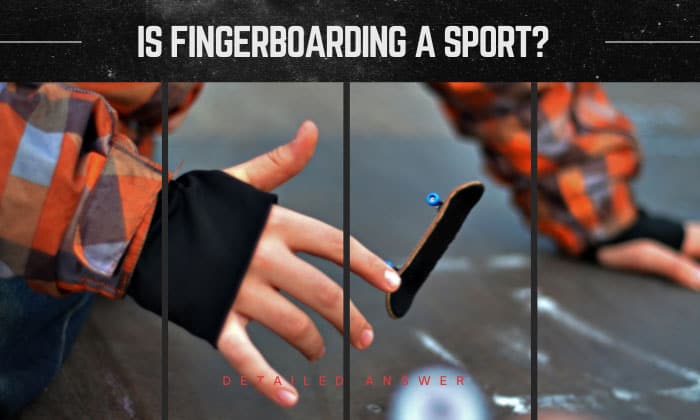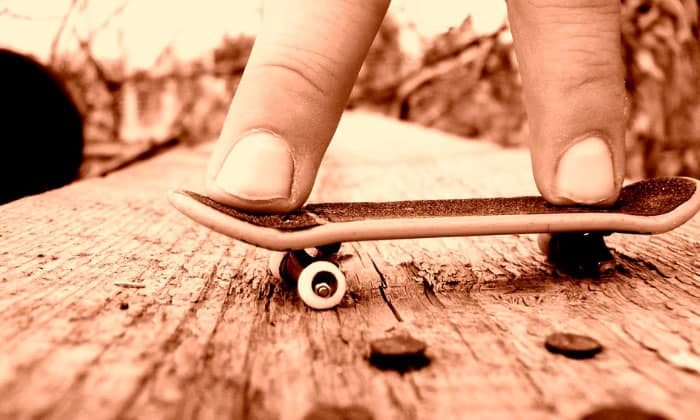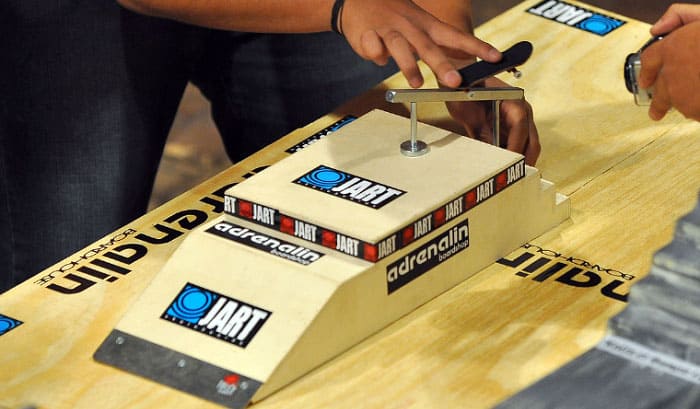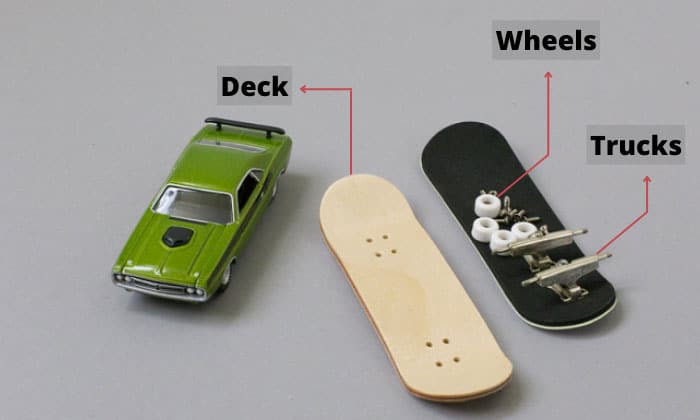One of the reasons skateboarding made it to the international sporting arena is its significant increase in popularity and social inclusiveness. And with the continued support for this sport, it’s possible to see skateboarding existing till the end of time.
But does this situation also apply to fingerboarding? Or is fingerboarding a sport?
Some believe it’s only a game. But in reality, finger skateboarding is a worldwide sporting phenomenon. Keep reading as we dig deeper into fingerboard concepts, their background, and other interesting facts.
Table of Contents
Finger Skateboarding and How It Became a Sport
Fingerboards are a source of fun and enjoyment. Like skateboards, these handy items let you perform tricks and dodge obstacles, but with your hand instead.
And with the complicated steps we make when maneuvering both boards, it’s right to consider finger skateboarding a real sport.
Is fingerboarding hard? Not only does it challenge our fingers to move and control the deck, but it also requires us to attain better precision and timing.
So, how did fingerboards make their names in the international arena? When was fingerboarding invented? And when was the first fingerboard made?
Let’s begin with Lance Mountain. Who can ever forget this man in the field of technical skateboarding?
In 1985, Mountain made the first official fingerboard after the latter came into the scene in the 60s as a key chain or hand toy. What about the first fingerboard obstacle? It was a double-bin sink with close resemblance to a skateboard ramp in a park.
What origin fingerboards had in terms of components? While no stores sold parts or complete fingerboards back then, people used wood, toy train axles, and tubes.
But not too long after the first public introduction of fingerboards, courtesy of Lance Mountain, Somerville International began producing fingerboards for public purchase in 1987.
The fingerboard market refused to decline as X-Concepts spearheaded one of the most famous brands today, Tech Deck. And from there, fingerboards became a formidable force in the toys industry, having captured the hearts of many teens, kids, and skateboard enthusiasts.
Today, we see not only complete fingerboards in many stores. Almost all professional fingerboard brands came to sell separate accessories and collectibles to feed everyone’s interest in these items.
Now, what made finger skating a worldwide competitive pursuit?
Finger skateboarding’s popularity first started in Europe and Asia. And not too far from the list is the United States, which leveled its European counterpart in terms of sales.
In these places, fingerboarding competitions happen at least once a year. Such a practice has been happening for years now and will probably continue in the years to come.
Does finger skateboarding deserve a citation in sports? Absolutely! As mentioned, it’s not a toy anyone can play with the way they like.
Fingerboards require specific movements to achieve a skill or trick, making it a competitive activity among many. But in case you have not seen fingerboards in televised sporting events, that’s normal. Fingerboard competitions on TV happen less frequently than skateboarding, which is now an Olympic sport.
Nonetheless, this doesn’t mean finger skating has no grounds for competition. To be a master in this sport, we need precision, timing, and control when moving through obstacles or flipping the board in the air.
And these are only a few criteria for someone to win medals and awards in a competition.
What is Fingerboarding?
Fingerboarding is skateboarding translated into a smaller board driven by your hand.
Compared to skateboards, finger skateboarding could be less straining because most mechanical work only happens through the hands and a bit with the arms.
If skateboarding finds one of your feet positioned on the tail, fingerboards have your middle finger on the same part. Additionally, the left foot of regular-footed skaters is equivalent to your index finger on a fingerboard.
Skills-wise, what you do with skateboards is also possible with fingerboards. Yes! Fingerboarding tricks also begin with ollies as a fundamental.
Parts of a Fingerboard
Does a fingerboard contain the same parts as a skateboard? Yes! Let’s understand a fingerboard’s components below.
1. Deck
One of the things that could amaze every fingerboard buyer is how meticulous brands are in the construction process. Skateboard decks come with multiple plies of wood, and so are fingerboards.
Fingerboard decks have an average width of around 28mm to 34mm. Now, imagine how the famous tiny skateboard name Tech Deck and other companies have stacked 4-7 veneer layers that small to make a miniature skateboard.
What’s better about fingerboard manufacturers is they also consider the skateboard’s shape, depth, and concavity.
Ultimately, fingerboard decks also use grip tape. This part usually comes as sandpaper-like sheets or foamy grip tape for premium boards.
2. Trucks
If you never thought of fingerboards getting more detailed, you probably have not disassembled a pair of their trucks.
Fingerboard trucks also have two primary parts: a hanger and a baseplate. And yes, you can dismount these parts to change bushings or perform other maintenance procedures.
Related: DIY Fingerboard Bushings.
3. Wheels
We can classify fingerboard wheels into two categories: bearing and non-bearing. If skateboard wheels use PU as their primary material, those on fingerboards are of various plastic types. Thus, some can be soft, grippy, hard, or smooth.
Related: Steps to Dye Fingerboard Wheels.
Is Professional Fingerboarding a Thing?
We can’t question someone’s dedication to fingerboards. They’re not simple toys children can master, as they also require precision to perfect the skills you do with skateboards.
Finger skateboarding is an emerging professional sport. Before, competitions only happened among states and provinces of a nation. But today and prospectively, these contests are bound to take place internationally.
Conclusion
Fingerboards deserve the recognition we give to skateboards. Both objects may have salient differences, but they still require patience and determination to master.
So, is fingerboarding a sport? With how detailed a fingerboard’s parts are, the skill level required to execute tricks, and how fingerboards emerged from a small city to the international scene, fingerboard skating is indeed a sport.
There is so much more to learn about fingerboards. We only have to open our minds and see a broader world in this sport.
Read next: Ideal Fingerboard Size for You – 29, 32 or 34mm?

Hi, I am Charles Harris. I opened this site to write as much as I can about my biggest passion – skateboarding!
I started as a clumsy yet passionate rookie 10 years ago to now a still passionate yet much better skateboarder! But I have to tell you, the whole journey has always been fun and rewarding, indeed not without hardship.





